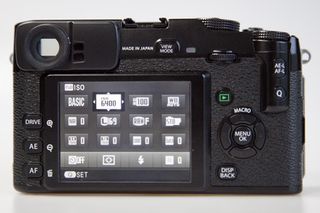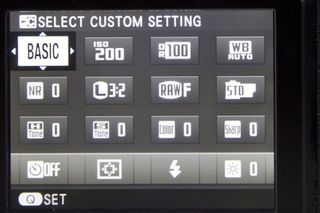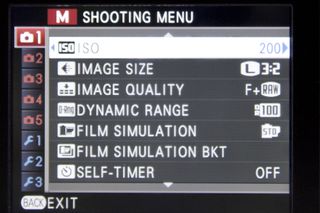TechRadar meets Fuji X-Pro1 designer
Fuji listened to X100 users to perfect the X-Pro1

While Fuji's traditionally styled compact cameras, the X100 and X10, have proved a major hit with enthusiast photographers, they are not without their flaws. In fact shortly after its launch Fuji released a flurry of firmware upgrades to correct issues with the X100. There are also a few hardware issues that cannot be addressed by firmware and naturally Fuji was keen to iron out any creases for its interchangeable lens X-series camera, the X-Pro1.

Speaking to TechRadar at CES 2012, Jun Sato, Fuji's Design Manager for the X-series, revealed that the X-Pro1 was about half-way finished when he received feedback on the X100 that would allow his team to finesse the new camera.
One of the key requests for the X-Pro1 was that the shutter speed dial on the top-plate be given a lock to prevent it from being knocked out of the automatic setting. This was problem for photographers using the X100 with the shutter speed dial and aperture ring in their 'A' (for automatic) settings to select program exposure mode, or in aperture priority mode when the aperture is set manually using the lens ring, while the camera sets the shutter speed automatically.

Although the X-Pro1's shutter dial can be rotated freely throughout the shutter speed range, the button at its centre needs to be pressed to set to, or take it off the A setting. This approach avoids the rather fiddly process of having to press the button while rotating the dial everytime the shutter speed is selected.
Another dial related request was that the exposure compensation dial be moved further into the body of the camera so that it is less easily knocked into the wrong setting. Sato says this dial is very important to the X-Pro1's target audience of serious enthusiast and professional photographers, so he was extremely keen that it should be correctly positioned to allow a fast means of adjusting exposure.
Sato also worked with Fuji's engineers to enable the number of buttons on the back of the X-Pro1 to be reduced so that more space is available for the photographer's fingers and the command dial could be moved to a better position.

Menu changes
In a further design change, faster setting adjustment was made possible by the provision of a Q button to access to the Quick Menu. This menu displays all the key settings and once one is selected via the navigation controls, it can be adjusted quickly using the command dial, thus avoiding the need to delve into the main menu.
Get daily insight, inspiration and deals in your inbox
Get the hottest deals available in your inbox plus news, reviews, opinion, analysis and more from the TechRadar team.

Responding to feedback about the X100's menu, Fuji increased the number of tabs into which the options are sub-divided so that less scrolling is required to find the desired option.

We will have to wait until we get our hands on a full-production sample of the X-Pro1 and spend some serious time shooting with it before we can pass final judgement on how successful Sato has been, but on the basis of the time we have spent with a pre-production, we think he's done a pretty good job.
Rumourmill
There were rumours circulating around the CES show that Fuji is working on a less advanced, more affordable X-series camera that accepts interchangeable lenses, but as yet Fuji has not confirmed whether we will see another camera in the near future.
----------------------------------------------------------------------------------------------------
Liked this? Then check out Best DSLR: top cameras by price and brand
Sign up for TechRadar's free Week in Tech newsletter
Get the best tech stories of the week, plus the most popular news and reviews delivered straight to your inbox. Sign up at http://www.techradar.com/register
Follow TechRadar Cameras on Twitter * Find us on Facebook * Add us on Google+
Most Popular

